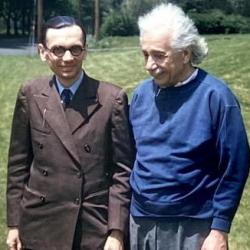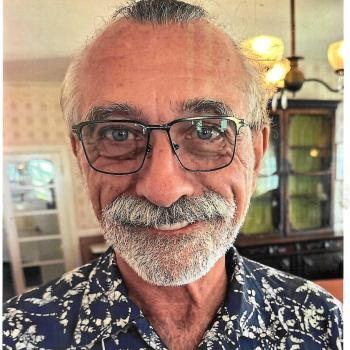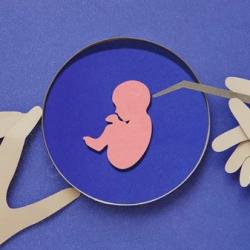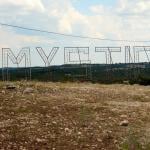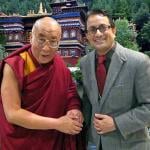Bodily Resurrection. Soul 7

Bodily resurrection? Yes, I’m aware that it is Palm Sunday (or Passion Sunday) and we must progress all the way through Holy Week before we get to Easter. But, let’s get ready to announce on Easter the bodily resurrection of Jesus Christ. If God raises the body, what happens to the soul?
Patheos has many posts on resurrection. In this Patheos series on the soul, I have favored thinking of the soul as the real you. The soul is the essence or structure of the very self that you have come to know, the very self that God knows even better than you do.
But like a ping pong ball, theologians have been batting the soul around and even slamming it on occasion. Some believe the soul is immortal. Some don’t.
We’ve tried to grasp the thoughts of substance dualists, trichotomists, materialists, evolutionary emergentists, and nonreductive physicalists. On the one hand, we can thank our theological flibbertigibbets for taking seriously what the Bible says in Genesis 2:7 and 1 Corinthians 15:42-44. But, on the other hand, what our theologians say differs shambolically from one another. There’s no consensus. What’s a person of faith to do?
What does St. Paul say about bodily resurrection?
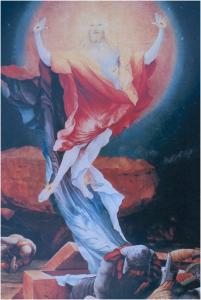
Here’s what I recommend. Give special attention to 1 Corinthians 15:42-44. Try to interpret what Saint Paul is saying.
“So it is with the resurrection of the dead. What is sown is perishable [corrupt, φθορᾶ], what is raised is imperishable [incorrupt, ἀφθαρσία]. It is sown in dishonor [ἀτιµία], it is raised in glory [δόξῃ]. It is sown in weakness [ἀσθενία], it is raised in power [δυνάµει]. It is sown a physical body [σῶµα ψυχικόν], it is raised a spiritual body [σῶµα πνευµατικόν]” (1 Cor. 15:42-44).
This text suggests that our ensouled body (soma psychikon) dies like a plant dies and gets buried. What God raises is you or me as a spiritualized body (soma pneumatikon). Now, just how should we conceptualize this? That’s the task of the systematic theologian (Peters, 2002).
Jesus’ Easter Resurrection is a Prolepsis of the New Creation
What happened to Jesus’ person on Easter becomes for us God’s promise of what will happen to the entire creation eschatologically. Easter tells us about the afterlife. And more.
God’s eschatological promise is symbolized by the “kingdom of God” and the “new creation” in the Bible. Easter anticipates the renewal of all things. The vision of the Peacable Kingdom in Isaiah 11 where the lion and wolf will lie down with the lamb presents the natural world about which God can honestly say in Genesis 1:1-2:4a, “Behold, it is very good.” The vision of the New Jerusalem in Revelation 21 presents the healing dimension of our salvation where there will be no more

‘See, the home of God is among mortals.
He will dwell with them;
they will be his peoples,
and God himself will be with them;
he will wipe every tear from their eyes.
Death will be no more;
mourning and crying and pain will be no more,
for the first things have passed away.’ (Revelation 21:3-4)
On the first Easter Sunday when God raised Jesus from the tomb, our risen Lord embodied ahead of time the Peaceable Kingdom (Isaiah 11) and the New Jerusalem (Revelation 21). Jesus anticipated in his person the equivalent of resurrection for the entire creation, namely, the new creation. Jesus is the personal prolepsis of the redemption of the entire cosmos. That is the New Testament promise.
That is also the Christian hope.
Speaking Frankly about Death
When we find ourselves comforted by anticipating our future resurrection, we can speak much more frankly about death. We need not tiptoe around the “D” word with euphemisms such as “passed away” and ways to avoid our fear of finality. “Resurrection is predicated on death,” writes Rachel Mann, an Anglican priest in the Church of England. “Christianity retains a potent voice ont he inescapability of death”(Mann 2024). Realism and honesty accompany our resurrection hope.
Conclusion
In this series we have considered a number of Theologies of the Soul, a number of alternative models for defining the essence of the human person and our relationship to our eternal God. The Bodily Resurrection of Jesus on the first Easter becomes the starting point for those in the Christian tradition to construct concepts about God’s eschatological promise for the consummation of all things, soul included.
ST 4136. Soul 7. Bodily Resurrection
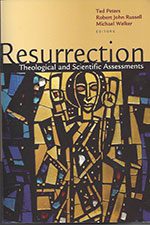
Patheos ST 4131 Soul 1 Theologies of the Soul
Patheos ST 4132 Soul 2 Substance Dualism
Patheos ST 4133 Soul 3 Trichotomy
Patheos ST 4134 Soul 4 Materialisms
Patheos ST 4135 Soul 5 Emergent Dualism
Patheos ST 4136 Soul 6 Non-Reductive Physicalism
Patheos ST 4137 Soul 7 Bodily Resurrection
Patheos ST 4138 The Soul of Benedict XVI
Patheos ST 4139 Blessed Mother Olga of Alaska knitted mittens
Patheos ST 4140 Supporting Husbands in Theology
▓
For Patheos, Ted Peters posts articles and notices in the field of Public Theology. He is a Lutheran pastor and emeritus professor at the Graduate Theological Union. He co-edits the journal, Theology and Science, with Robert John Russell on behalf of the Center for Theology and the Natural Sciences, in Berkeley, California, USA. His single volume systematic theology, God—The World’s Future, is now in the 3rd edition. He has also authored God as Trinity plus Sin: Radical Evil in Soul and Society as well as Sin Boldly: Justifying Faith for Fragile and Broken Souls. See his website: TedsTimelyTake.com.
▓
Resources
Mann, Rachel, 2024. “Speaking of death,” Christian Century 141:3 (March 2024) 36-37.
Peters, Ted; Robert John Russell, and Michael Welker, eds., Resurrection: Theological and Scientific Assessments. Grand Rapids: Eerdmans, 2002.





